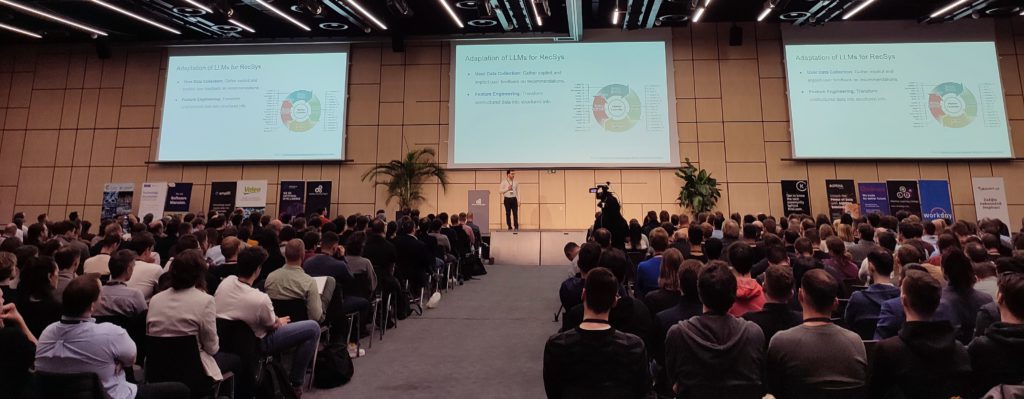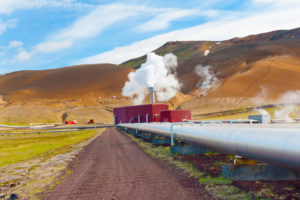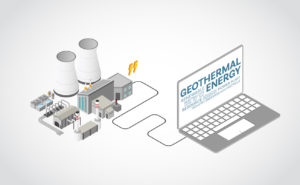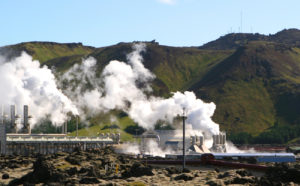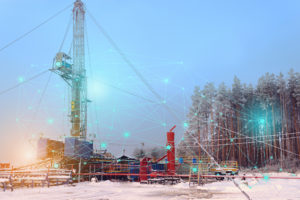One of the biggest European conferences about Machine Learning, AI and Deep Learning applications Machine Learning Prague 2024 was held on April 22-24 in Prague, Czech Republic.
Henning Knauer, from the Fraunhofer Research Institution for Energy Infrastructures and Geothermal Systems IEG, participated in a poster session on the first day of the conference, representing the OptiDrill Project and concept.
In this article, we had a discussion with Henning Knauer about his experience at the 8th Machine Learning Prague 2024 conference, and about the latest updates of the OptiDrill project.
Give us a brief idea about your poster presentation on “Optimizing the Geothermal Drilling Process Using Artificial Intelligence Methods”.
I presented a brief general overview of the OptiDrill project, its motivation and the overall objective, alongside some more technical details about the AI-related developments. The main part of my presentation focused on the development of two of the AI-based software modules focusing on ROP (drill speed) prediction and optimization and the prediction of the drilled lithology (rock type or class).
Tell us about your contribution and overall experience at the Machine Learning Prague Conference 2024.
On the first day of the conference, I participated in a poster session where I presented our project, offering detailed insights into its technical and machine learning aspects. The poster covered topics such as data processing and handling, model selection and development, as well as validation and result discussions. Attendees had the chance to ask questions and engage in discussions about the project. The feedback was overwhelmingly positive, and I had several engaging conversations with engineers, data scientists, and machine learning enthusiasts.
Prior to the conference on day 1, I had the chance to attend two very interesting workshops dealing with the topics real-time-anomaly detection and stream processing, as well as physics informed neural networks. During the conference there were many talks and presentations about the latest developments and applications of machine learning from the industry and research institutions. Among the speakers were scientists from several companies and research institutions including Microsoft, Meta, Google and NASA.
How do conferences like these have a positive impact on the geothermal and machine learning industry, and professionals?
Conferences like these are the perfect opportunity for networking with other scientists from the same field, staying up to date with the latest developments and finding inspiration for possible new applications and solutions for existing challenges. You get to meet a lot of interesting people and have the opportunity to discuss your own and their research leading to valuable insights into other areas, fresh input for your own work and possibly new contacts. Attending the workshops and following the presentations during the conference I brought home a couple of fresh ideas and valuable inputs that will definitely help with upcoming development tasks.
In your perspective, how do AI methods contribute to fostering a sustainable and eco-friendly future, particularly in relation to the OptiDrill concept and its implementation?
AI methods have a huge potential to positively impact different fields of research and industry related to renewable energies that contribute to a greener future. The research and applications in the field of AI and in particular machine learning have made significant progress during the last years, the best recent example being Large Language Models (LLMs) such as chatGPT.
Regarding the OptiDrill concept and its implementation, there is a great potential of leaving a positive impact on the geothermal energy industry by optimizing the drilling process of deep geothermal wells. Considering that the drilling process alone can account for a significant portion of the overall project development expenditure of a deep geothermal energy plant of 40% and more there is a huge potential for reducing cost. Compared to conventional drilling for shallower resources, drilling for deep geothermal resources, where formations up to 5000m deep and even deeper are targeted, harsher environmental conditions are met leading to more challenges and uncertainties during the drilling process, often resulting in a significant amount of none productive time (NPT). The analysis of daily drilling reports (DDRs) during the course of the project showed that for some geothermal drilling projects the share of non-drilling hours in the total number of hours spend for completing the drilling amounted to over 40%, which considering the huge expenses for equipment and crew results in a significant loss of financial means. This underlines that there is a high potential for optimizing the drilling process with the objective of saving time, energy and money while making the process more reliable and investing in geothermal energy more attractive. AI based methods, which have proven to be very powerful tools for optimization might be just the perfect fit for this task.
